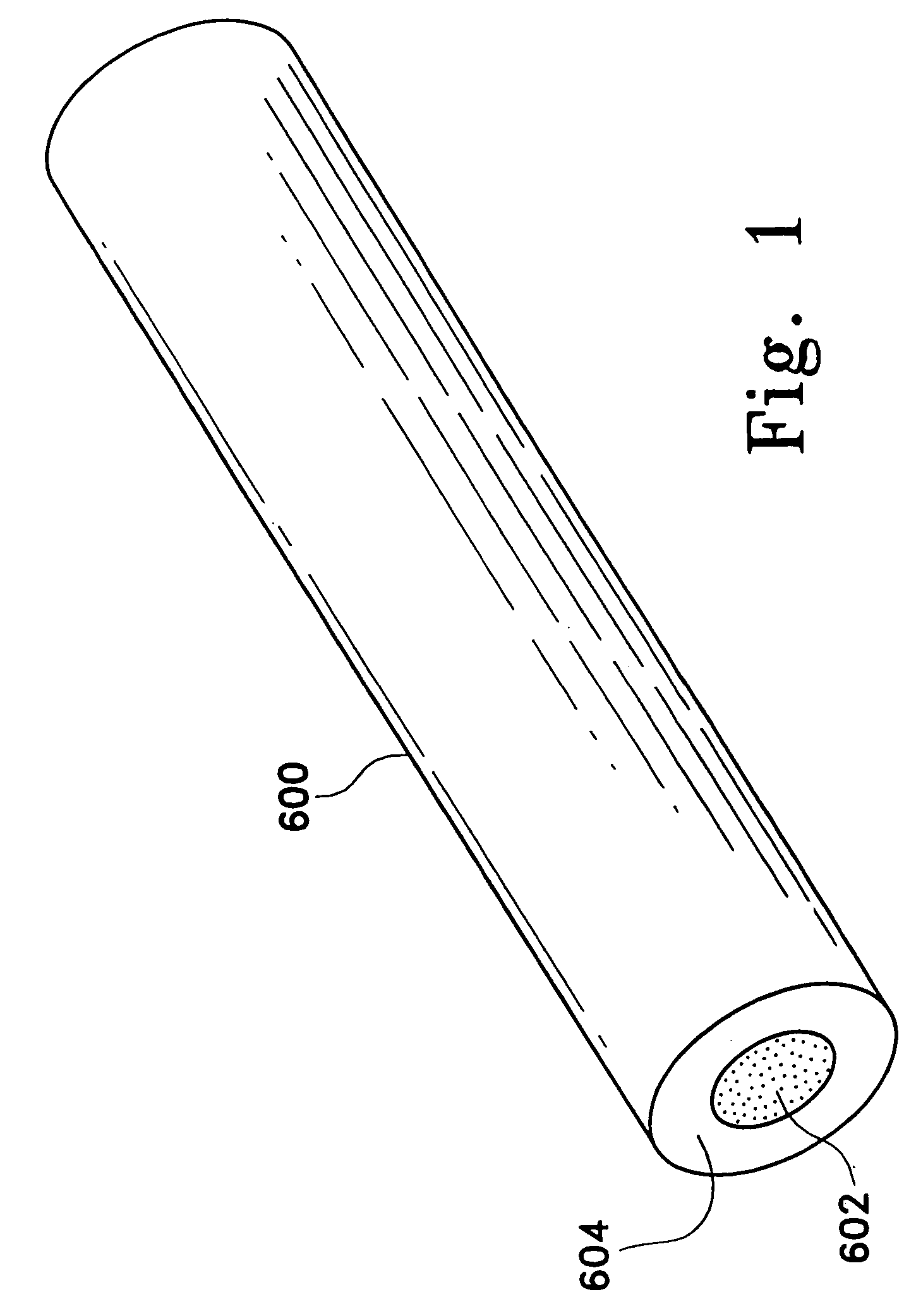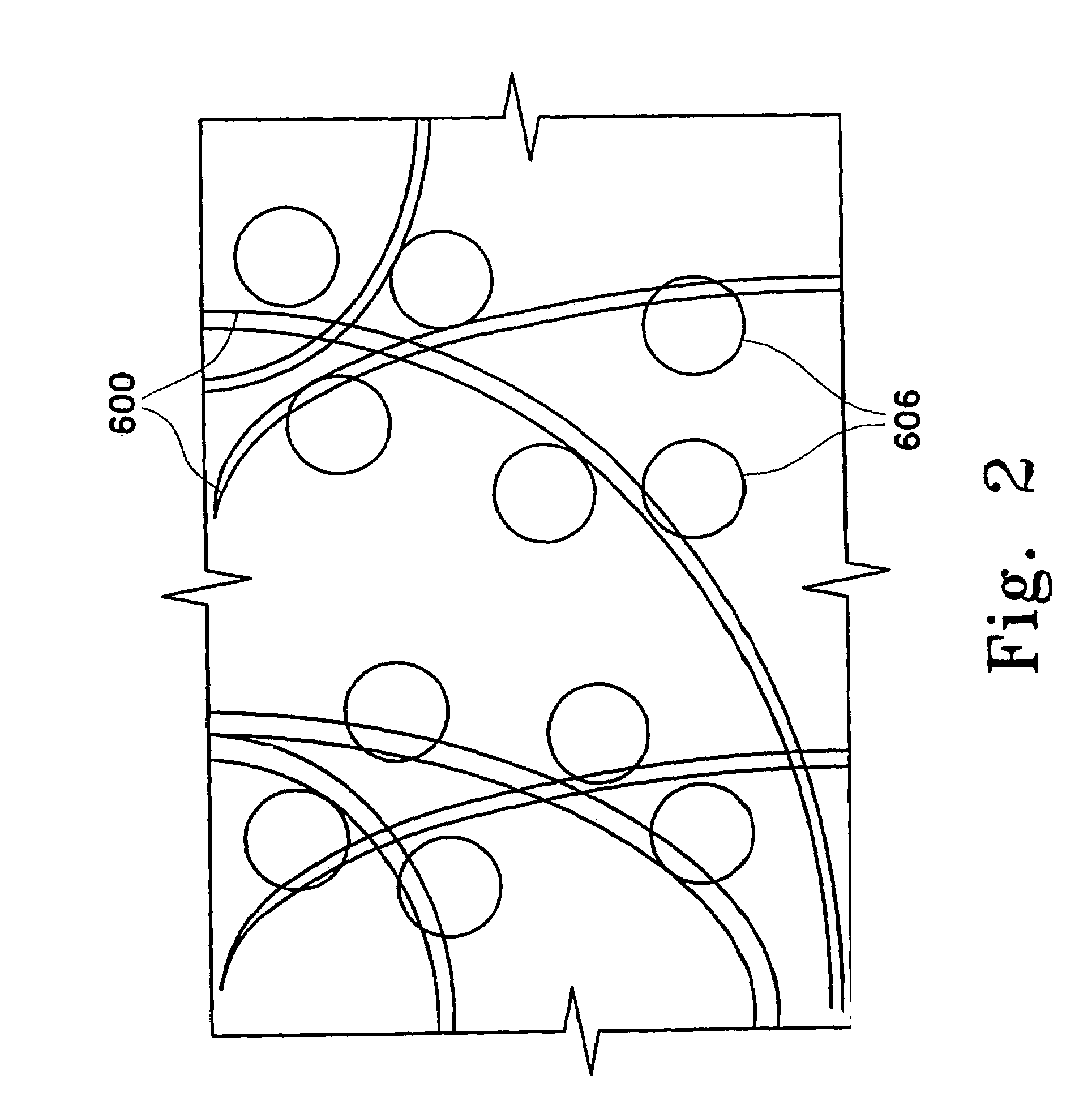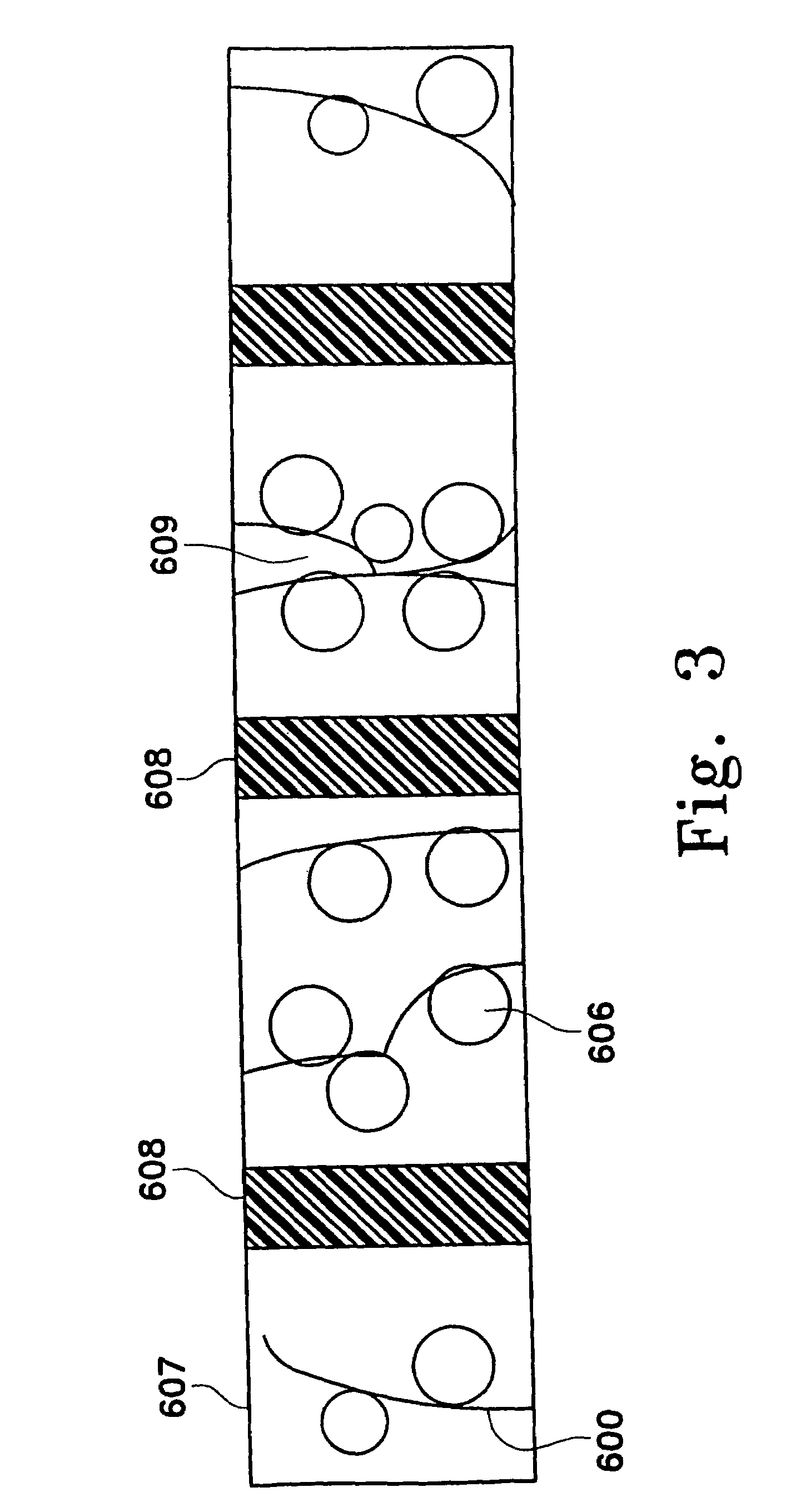Adsorbing pathogen-inactivating compounds with porous particles immobilized in a matrix
a technology of porous particles and pathogens, applied in the field of compound reduction, can solve the problems of low molecular weight compound adsorption, complex and expensive dialysis procedures, and current filtration mechanisms, etc., and achieve the effect of reducing the concentration of compounds
- Summary
- Abstract
- Description
- Claims
- Application Information
AI Technical Summary
Benefits of technology
Problems solved by technology
Method used
Image
Examples
example 1
Fiberized Resin with Amberlite® XAD-16
[0258]This example compares both the kinetics of removal of aminopsoralens from platelets and platelet function and morphology utilizing fiberized resin and devices containing non-immobilized adsorbent beads. More specifically, fiberized resin comprising immobilized Amberlite® XAD-16 was compared with devices containing free (i.e., not immobilized) Amberlite® XAD-16 HP and Dowex® XUS-43493.
Preparation of Fiberized Resin and Adsorbent Beads
[0259]Immobilized adsorbent media containing Amberlite® XAD-16 in a cleaned and hydrated state (Rohm and Haas) was obtained from AQF. The fibers of Hoechst Celanese's fiber network consisted of a polyethylene terephthalate core and a nylon sheath, the sheath having a lower melting temperature than the core. The fiberized resin was prepared by first evenly distributing the adsorbent beads in the fiber network. Next, the fiber network was rapidly heated causing the polymer sheath of the fibers to melt and bond to...
example 2
Fiberized Resin with Activated Charcoal
[0276]This example compares the kinetics of removal of 4′-(4-amino-2-oxa)butyl-4,5′,8-trimethyl psoralen from platelets and platelet function and morphology for fiberized resin comprising Amberlite® XAD-16 and for fiberized resin comprising immobilized activated charcoal.
Preparation of Fiberized Resin
[0277]Hoechst Celanese prepared fiberized resin containing Amberlite® XAD-16 HP (Rohm and Haas). The fiberized resin containing the Amberlite® XAD-16 was prepared as described in the preceding example, including the 30% ethanol wetting step. Hoechst Celanese also prepared fiberized resin containing immobilized activated charcoal (WestVaco) at a loading of 375 g / m2 (AQF-375-B) and 500 g / m2 (AQF-500-B). #In a preferred embodiment, the adsorbent particles is a synthetic activated carbon, including for example, Ambersorb and A-Supra. Synthetic activated carbons are preferred due to their ability to eliminate the amount of particulate material shed from...
example 3
Effect of pHEMA Coating on Adsorbent Hemocompatibility
[0287]This example compares the kinetics of removal of 4′-(4-amino-2-oxa)butyl-4,5′,8-trimethyl psoralen from platelets and platelet function and morphology for both Dowex® XUS-43493 and fiberized resin containing Amberlite® XAD-16 coated with pHEMA.
Preparation of pHEMA-Coated Adsorbent Beads and Fiberized Resin
[0288]Dowex® XUS-43493 (commercially known as Optipore® L493) containing approximately 50% water by weight was obtained from Dow, and polymerized HEMA with a viscosity average molecular weight of 300 kD was obtained from Scientific Polymer Products. Prior to coating, the adsorbent beads were dried to a water content of <5%. A stock solution of pHEMA was prepared by dissolving the polymer in 95% denatured ethanol / 5% water to achieve a pHEMA concentration of 50 mg / ml.
[0289]The coating process was performed by International Processing Corp. in a 9-inch Wurster fluidized bed coater with a charge of approximately 4 kg (dry) of ...
PUM
 Login to View More
Login to View More Abstract
Description
Claims
Application Information
 Login to View More
Login to View More - R&D
- Intellectual Property
- Life Sciences
- Materials
- Tech Scout
- Unparalleled Data Quality
- Higher Quality Content
- 60% Fewer Hallucinations
Browse by: Latest US Patents, China's latest patents, Technical Efficacy Thesaurus, Application Domain, Technology Topic, Popular Technical Reports.
© 2025 PatSnap. All rights reserved.Legal|Privacy policy|Modern Slavery Act Transparency Statement|Sitemap|About US| Contact US: help@patsnap.com



